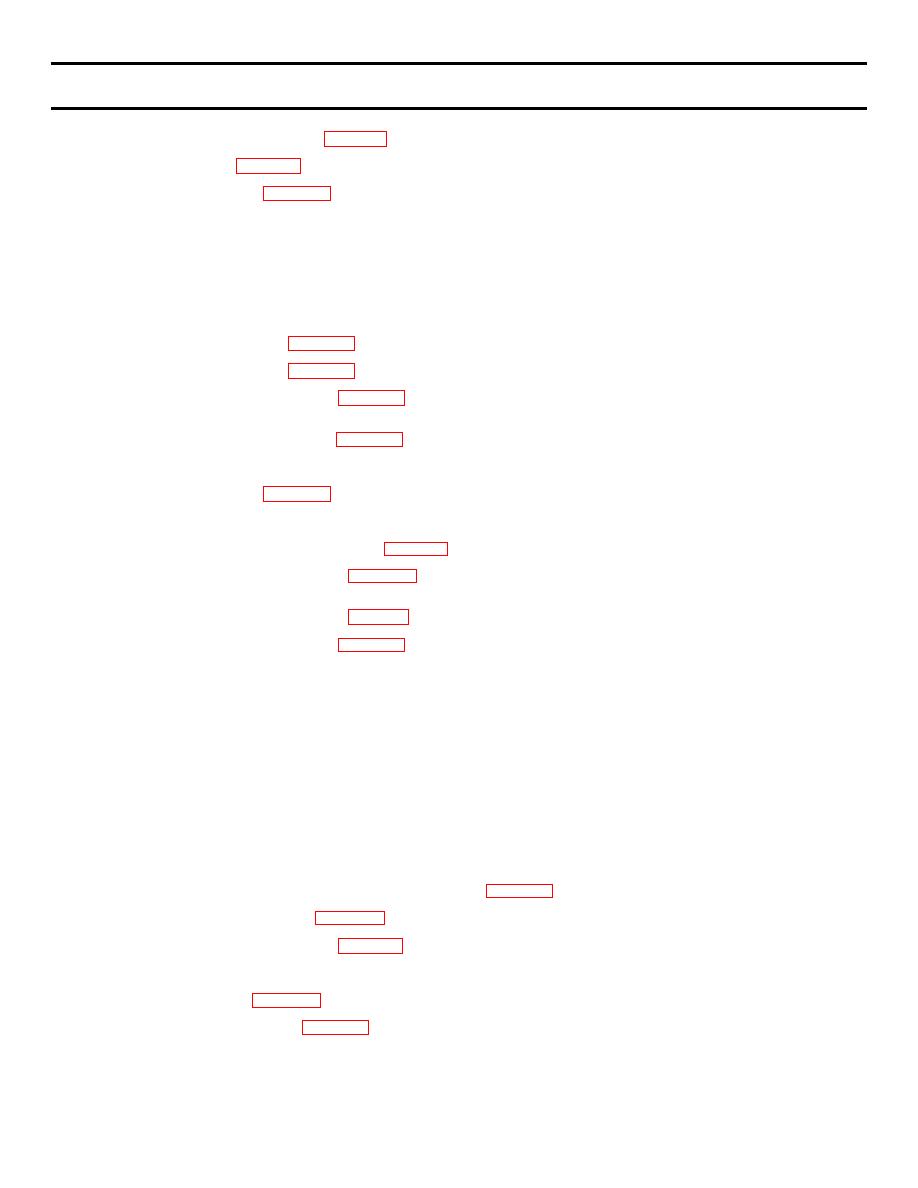
| Tweet |

Custom Search
|
|

|
||
 MALFUNCTION
TEST OR INSPECTION
CORRECTIVE ACTION
Step 5. Check cylinder head gaskets
Replace defective gaskets (para 3-6).
Step 6. Check for carbon on air inlet ports
Clean ports (para 4-15 b.(1)(i)).
Step 7. Check for faulty injector.
Replace injector (para 3-12).
Step 8. Check for dirty fuel oil
Drain and clean entire fuel system.
Step 9. Check if fuel system is completely primed.
Determine weak or missing cylinder by taking exhaust temperatures with the pyrometer. Weak cylinders will
be indicated by low exhaust temperatures. Prime fuel system of weak cylinders.
Step 10. Check for cylinders incorrectly balanced.
Inspect the position of the injection pump control racks.
Step 11. Check air intake for clogged entry.
Clean intake.
Step 12. Excessive exhaust back pressure.
Clean exhaust ports (para 4-15).
Step 13. Engine exhaust port carboned.
Clean exhaust ports (para 4-15).
Step 14. Poor cylinder wall lubrication
Check force feed lubrication (para 4-16).
3.
BLACK OR GRAY EXHAUST.
Step 1. Check scavenging air for low pressure.
Check scavenging air pump (para 3-16).
Step 2. Check cylinders for incorrect balance. causing overload.
Inspect the position of the injection pump control racks.
Step 3. Check for defective injector.
Replace injector (para 3-12).
Step 4. Check for obstruction in air intake.
Remove obstructions.
Step 5. Check for late fuel pump timing.
Check fuel pumps for proper timing (para 3-11).
Step 6. Check for low engine temperature.
Check engine heat exchanger (para 3-21).
4.
BLUE SMOKE.
Step 1. Check that lubricating oil may be entering combustion chamber.
Piston cracked, replace piston (para 3-7).
Step 2. Check for excessive cylinder wall lubrication.
Check force feed lubrication (para 4-16).
5.
WHITE SMOKE.
Step 1. Check for water leaking into combustion chamber.
Isolate fuel injection system of each cylinder, one at a time to determine which cylinder has water leaks,
determine leak source, repair.
6.
ENGINE DETONATES.
Step 1. If there is a hard knock indicating detonation in one or more cylinders. STOP the engine immediately to prevent
serious damage due to the excess of pressure accompanying detonation.
Detonation is caused by the presence of fuel or lubricating oil in the cylinder during the compression stroke.
This may be caused by leaky injectors, improper timing of the fuel injection pump and sometimes by the
lubricating oil working up from the crankcase into the combustion chamber. Knocks other than fuel are
either loose bearings, flywheels, pistons, improperly adjusted valves, or blow-by caused by broken or stuck
piston rings. Trouble from knocking, other than fuel knocks, can usually be found by the nature of the
sound, under different load conditions and by cutting out one cylinder at a time. Where the loose or in-
correctly adjusted part is found, the remedy is usually obvious and referen es to articles under part effected
c
will be found helpful in making needed correction.
7.
OVERHEATING.
Step 1. Check for excessive back pressure in exhaust system.
Inspect exhaust silencer and clean exhaust manifold (para 4-15).
Step 2. Check for low rpm under full load.
Adjust governor linkage (para. 3-13).
Step 3. Check for late fuel injection.
Retime fuel injection pumps (para 3-11).
Step 4. Check for insufficient supply of fresh water.
Check fresh water expansion tank, and piping forleaks. Tank should be at least half full at all times.
Step 5. Check for defective fresh water pump.
Replace pump (pars 3-18).
Step 6. Check for clogged heat exchanger.
Clean heat exchanger (para 3-21).
3-11
|
||
 |
||